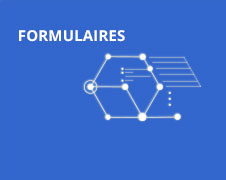Simone Falk
- Professeure titulaire
-
Faculté des arts et des sciences - Département de linguistique et de traduction
Pavillon Lionel-Groulx, room C-9036
Profile
Research expertise
My research focuses on the interface between language and music. I am particularly interested in rhythmic phenomena in music and speech and rhythmic functions in communication, language acquisition and speech and language pathology. My approach is fundamentally interdisciplinary inspired by theory and methods of several disciplines (experimental linguistics, neurosciences (EEG), cognitive sciences, movement sciences).
The major aim of my current research program is to examine the role of rhythmic and temporal predictions in language processing in order to
- characterize developmental speech and language deficits and better understand individual differences
- unravel the role of temporal predictions in discourse comprehension, verbal and motor coordination between interlocutors
- collaborate with speech therapists to develop new approaches for speech pathology intervention based on musical training, singing and rhythm interaction
For more information…
Affiliations and responsabilities
Research affiliations
Research units
Titulaire
Membre
CRBLM -CENTRE FOR RESEARCH ON BRAIN, LANGUAGE AND MUSIC
https://crblm.ca/
Teaching and supervision
Teaching
Courses taught (current session only)
- LNG-2355 – Troubles du langage et linguistique
- LNG-3160 – Atelier de travaux pratiques
- LNG-6030 – Pathologie du langage
Programs
- 118010 – Baccalauréat en linguistique
- 118020 – Majeure en linguistique
- 118040 – Mineure en linguistique
- 118240 – Mineure en sciences cognitives
- 122012 – Baccalauréat en neuroscience cognitive
- 183515 – Baccalauréat en enseignement du français au secondaire
- 218010 – Maîtrise en linguistique
- 318010 – Doctorat en linguistique
- 353011 – Doctorat en neurosciences
Student supervision
Theses and dissertation supervision (Papyrus Institutional Repository)
Rhythms of speech : exploring timing mechanisms in stuttering
Cycle : Doctoral
Grade : Ph. D.
Le traitement de l'accord de l'adjectif et du déterminant en modalité auditive : une étude de potentiels évoqués chez les adolescents québécois
Cycle : Master's
Grade : M. Sc.
La coordination rythmique entre locuteurs lors d’une tâche de lecture alternée: Tâche verbale d’une étude sur l’entrainement rythmique
Cycle : Master's
Grade : M.A.
Description de l’effet de transfert musique-parole et discussion sur son origine
Cycle : Master's
Grade : M.A.
L'acquisition de la coréférence chez les enfants ayant un trouble développemental du langage : revue méta-analytique des facteurs influençant ce phénomène
Cycle : Master's
Grade : M.A.
Projects
Research projects
Chaire de recherche du Canada : Interdisciplinary studies on rhythm and language acquisition
The role of rhythm in the development of speech perception and production
Developmental Neurolinguistics Laboratory
The role of rhythm in the development of speech perception and production
Group singing to support social wellbeing and communication in adults with communication disorders: A knowledge generation and mobilization partnership
Le rythme et la coordination entre locuteurs dans la communication orale chez les enfants
Chaire de recherche du Canada en Interdisciplinary studies on rhythm and language acquisition
CRBLM //The stuttering choir - technical development and programming of an online interface for timed recording of speech and singing
The stuttering choir
Predictive timing in speech production and perception
Watch me talk : Rhythmic coordination of children who stutter and their different interlocutors
Rhythm is it – finding the missing link between language and the body
Outreach
Publications and presentations
Publications
Journal articles (peer-reviewed)
- Rathcke, T., Falk, S., & Dalla Bella, S. (2024). Why Does Speech Sometimes Sound Like Song? Exploring the Role of Music-Related Priors in the “Speech-to-Song Illusion”. Music & Science, 7. https://doi.org/10.1177/20592043241266060
- Berthault, E., Chen, S., Falk, S., Morillon, B., & Schön, D. (2024). Auditory and motor priming of metric structure improves understanding of degraded speech. Cognition, 248: 105793. https://doi.org/10.1016/j.cognition.2024.105793.
- Franke, M., Schreier, R., Hoole, P.; Falk, S. (2023). Temporal organization of syllables in paced and unpaced speech in children and adolescents who stutter. Journal of Fluency Disorders, 76, 105975. https://doi.org/10.1016/j.jfludis.2023.105975.
- Oschkinat, M., Hoole, P.; Falk, S, & Dalla Bella, S. (2022). Processing temporal auditory feedback in speech is modulated by rhythmic abilities and auditory acuity. Frontiers in Human Neuroscience, 16. https://doi.org/10.3389/fnhum.2022.885074
- Falk, S. & Audibert, N. (2021). Acoustic signature of communicative dimensions in codified mother-infant interactions. Journal of the Acoustical Society of America, 150(6), 4429-4437, https://doi.org/10.1121.10.0008977
- Falk, S., Fasolo, M., Genovese, G., Romero-Lauro, L., & Franco, F. (2021). Sing for me, Mama! Infants' discrimination of novel vowels in song. Infancy, 26(2), 248–270. https://doi.org/10.1111/infa.12387
- Aichert, I., Lehner, K., Falk, S., Späth, M., Franke, M., & Ziegler, W. (2021). In time with the beat: Entrainment in patients with phonological impairment, apraxia of speech, and Parkinson’s disease. Brain Sciences, 11: 1524. https://doi.org/10.3390/ brainsci11111524
- Petrone, C., d’Alessandro, D., & Falk, S. (2021). Sources of individual variation in the imitation of phonological intonational structure. Journal of Phonetics (89), 10111. https://doi.org/10.1016/j.wocn.2021.101100
- Rathcke, T., Lin, C.-Y., Falk, S., & Dalla Bella, S. (2021). Tapping into linguistic rhythm. Laboratory Phonology 12(1): 11, 1–32. DOI: https://doi.org/10.5334/labphon.248
- Rathcke, T., Falk, S., & Dalla Bella, S. (2021). Music to your ears: Sentence sonority and listener background modulate the “speech-to-song illusion”. Music Perception 38(5), 499-508. https://doi.org/10.1525/MP.2021.38.5.499
- Fiveash, A; Falk, S., & Tillmann, B. (2021). What you hear first, is what you get: Initial metrical cue presentation modulates syllable detection in sentence processing. Attention, Perception & Psychophysics, 83, 1861-1877. https://doi.org/10.3758/s13414-021-02251-y
- Falk, S. & Tsang, C.D. (2020). 6- to 9-Month old infants discriminate vowel durations in variable speech contexts. Infant Behavior and Development, 61, 101475. doi: 10.1016/j.infbeh.2020.101475
- Hidalgo, C., Zécri, A., Pesnot-Lerousseau, J., Truy, E., Roman, S., Falk, S., Dalla Bella, S., Schön, D. (2020). Rhythmic abilities of children with hearing loss. Ear & Hearing (Epub ahead of print). doi: 10.1097/AUD.0000000000000926
- Ravignani, A., Dalla Bella, S., Falk, S., Kello, C., Noriega, F., & Kotz, S. (2019). Rhythm in speech and animal vocalizations: a cross-species perspective. Annals of the New York Academy of Sciences, 1453(1), 79-98. doi: 10.1111/nyas.14166
- Aichert, I., Lehner, K., Falk, S., Späth, M., & Ziegler, W. (2019). Do patients with neurogenic speech sound impairments benefit from auditory priming with a regular metrical pattern? Journal of Speech, Language, & Hearing Research, 62(8S):3104-3118. doi: 10.1044/2019_JSLHR-S-CSMC7-18-0172
- Falk, S., Lanzilotti, C., & Schön, D. (2017). Tuning neural phase entrainment to speech. Journal of Cognitive Neuroscience, 29(8), 1378-1389. doi:10.1162/jocn_a_01136
- Falk, S., & Kello, C.T. (2017). Hierarchical organization in the temporal structure of infant-directed speech and song. Cognition, 163, 80-86. DOI: 10.1016/j.cognition.2017.02.017
- Falk, S., Volpi-Moncorger, C., & Dalla Bella, S. (2017). Auditory-motor rhythms and speech processing in French and German listeners. Frontiers in Psychology, 8:395. DOI: 10.3389/fpsyg.2017.00395
- Tsang, C.D., Falk, S., & Hessel, A. (2017). Infants prefer infant-directed song over speech, Child Development, 88(4), 1207-1215. doi: 10.1111/cdev.12647
- Hidalgo, C., Falk, S., & Schön, D. (2017). Speak on time! Effects of a musical rhythmic training on children with hearing loss. Hearing Research, 351, 11-18. doi: 10.1016/j.heares.2017.05.006
- Phillmore, L., Fisk, J., Falk, S., & Tsang, C. (2017). Songbirds as objective listeners: Zebra finches (Taeniopygia guttata) can discriminate infant-directed song and speech in two languages. International Journal of Comparative Psychology, 30.
- Falk, S., Maslow, E., Thum, G., & Hoole, P. (2016). Temporal variability in sung productions of adolescents who stutter. Journal of Communication Disorders, 62, 101-114. http://dx.doi.org/10.1016/j.jcomdis.2016.05.012
- Falk, S., & Dalla Bella, S. (2016). It is better when expected: Aligning speech and motor rhythms enhances verbal processing. Language, Cognition & Neuroscience, 31, 699-708. http://dx.doi.org/10.1080/23273798.2016.1144892
- Falk, S., Müller, T., & Dalla Bella, S. (2015). Non-verbal sensorimotor timing deficits in children and adolescents who stutter. Frontiers in Psychology 6: 847. http://dx.doi.org/10.3389/fpsyg.2015.00847
- Falk, S., Rathcke, T., & Dalla Bella, S. (2014). When speech sounds like music. Journal of Experimental Psychology: Human Perception and Performance, 40(4), 1491-1506.
(chosen for APA: PeePs (Particularly exciting experiments in Psychology), 11th of September 2014). http://dx.doi.org/10.1037/a0036858 - Falk, S. (2014). On the notion of salience in spoken discourse - prominence cues shaping discourse structure and comprehension. Travaux interdisciplinaires sur la parole et le langage (TIPA), 30. http://dx.doi.org/10.4000/tipa.1303
- Falk, S. (2013). Communicative functions of rhythm - the case of radio broadcasting. Cahiers de Praxématique, 61.
- Falk, S. (2011). Melodic vs. intonational coding of communicative functions - A comparison of tonal contours in infant-directed song and speech. Psychomusicology, 21(1&2), 53-68.
- Falk, S. (2011). Temporal variability and stability in infant-directed sung speech: Evidence for language-specific patterns. Language and Speech, 54(2), 167-180.
- Öhl, P., & Falk, S. (2011). Syntactic competence and performance-based variation: the case of German particle verbs. In M. Putnam (Ed), Leuvense Bijdragen, Special issue: Syntax and Semantics of Particle Verbs, 97, 170-202.
- Falk, S. (2008). „Mama, sing mir mal das Buch!" Einige Überlegungen zu guten prosodischen Gestalten im frühen Spracherwerb. Journal of Literary Theory, 2(2), 229-250.
Monograph
- Falk, S. (2009). Musik und Sprachprosodie. Kindgerichtetes Singen im frühen Spracherwerb. [Musique et prosodie de la parole. Le chant dirigé vers l'enfant et son rôle pour l'acquisition du langage]. Berlin, New York: de Gruyter.
Joint Volumes
- Dalla Bella, S. & Falk, S. (accepted). Rhythmic processes in stuttering and Parkinson’s disease. Meyer, L., Strauss, A., Duchow, C. (Eds). Rhythms of Speech and Language. Cambridge University Press.
- Falk, S. (accepted, in press). Music and stuttering. In: Sammler, D. (Ed.) The Oxford Handbook of Music and Language. Oxford University Press.
- Kluth*, A.; Lemire-Tremblay*, M., Jamey*, K., Dalla Bella, S.; & Falk, S. (2023). Auswirkungen eines non-verbalen Rhythmustrainings auf die Sprechflüssigkeit und Sprechmotorik stotternder Kinder. In S. Tan; S. Düring, A. Wilde, L. Hamburger, T. Fritzsche (eds), Spektrum Patholinguistik 16: Schnittstelle Alltag, Transfer und Teilhabe in der Sprachtherapie (pp. 135-149), University of Potsdam, Germany.
- Falk, S. & Tsang, C.D. (2020). The role and functions of infant-directed singing in early development. In F. Russo, B. Ilari, & A. Cohen (Eds.), The Routledge Companion to Interdisciplinary Studies in Singing, Volume I: Development (pp.179-188). Routledge. https://doi.org/10.4324/9781315163734.
- Falk, S., Schreier, R., & Russo, F. (2020). Singing and stuttering. In R. Heydon, D. Fancourt, & A. Cohen (Eds), The Routledge Companion to Interdisciplinary Studies in Singing, Volume III: Wellbeing (pp. 50-60). Routledge. https://doi.org/10.4324/9781315162546
- Falk, S. (2020). Singen an der Schnittstelle zwischen Musik und Sprache [Singing at the interface between language and music]. In Elmenthaler, M. & Niebuhr, O. (Eds), An den Rändern der Sprache [Boundary phenomena in language] (p.299-322). Frankfurt/New York: Peter Lang.
- Rupp, E. & Falk, S. (2017). Perspektivierung grammatischer Entitäten - Ergebnisse zum Action-Sentence Compatibility Effekt [Perspectivization of grammatical entities – Insights from the Action-Sentence Compatibility effect]. In Zeman, S., Werner, M., Meisnitzer, B. (Eds.). Im Spiegel der Grammatik. Beiträge zur Theorie sprachlicher Kategorisierung. (pp.181-198). Tübingen: Stauffenburg Verlag.
- Falk, S., & Rathcke, T. (2011). The Speech-to-Song Illusion revisited. In K. Dębowska-Kozłowska, & K. Dziubalska-Kołaczyk (Eds), On words and sounds. A Selection of Papers from the 40th Poznan Linguistic Meeting 2009 (pp. 1-24). Cambridge: CSP.
- Falk, S. (2011). Zum Umgang mit der Perspektivenvielfalt geisteswissenschaftlicher Forschung. Ein Workshopbericht. In R. Dietrich, D. Smilovski, & A. Nünning (Eds.), Lost or Found in Translation? Interkulturelle/Internationale Perspektiven der Geisteswissenschaften. Trier: Wissenschaftlicher Verlag Trier.
- Falk, S. (2009). Phonische Basisqualifikation. In K. C. Ehlich, U. Bredel, & H. H. Reich (Eds.), Referenzrahmen zur altersspezifischen Sprachaneignung – Forschungsgrundlagen. (pp.11-30). Bonn, Berlin: Bundesministerium für Bildung und Forschung.
- Falk, S., Bredel, U., & Reich, H. H. (2008). Phonische Basisqualifikation. In K. C. Ehlich, U. Bredel, & H. H. Reich (Eds.), Referenzrahmen zur altersspezifischen Sprachaneignung (pp.35-40). Bonn, Berlin: Bundesministerium für Bildung und Forschung.
Disciplines
- Linguistics
- Music
- Neurosciences
Areas of expertise
- Le rythme de la parole et son traitement neurocognitif
- Linguistique expérimentale
- Musique et Langage
- Neurolinguistique
- Pathologie du langage et de la parole
Aide en ligne pour votre profil | Nous joindre
Le Répertoire des professeurs est propulsé par les données du ![]() SADVR et est un projet du CENR.
SADVR et est un projet du CENR.


